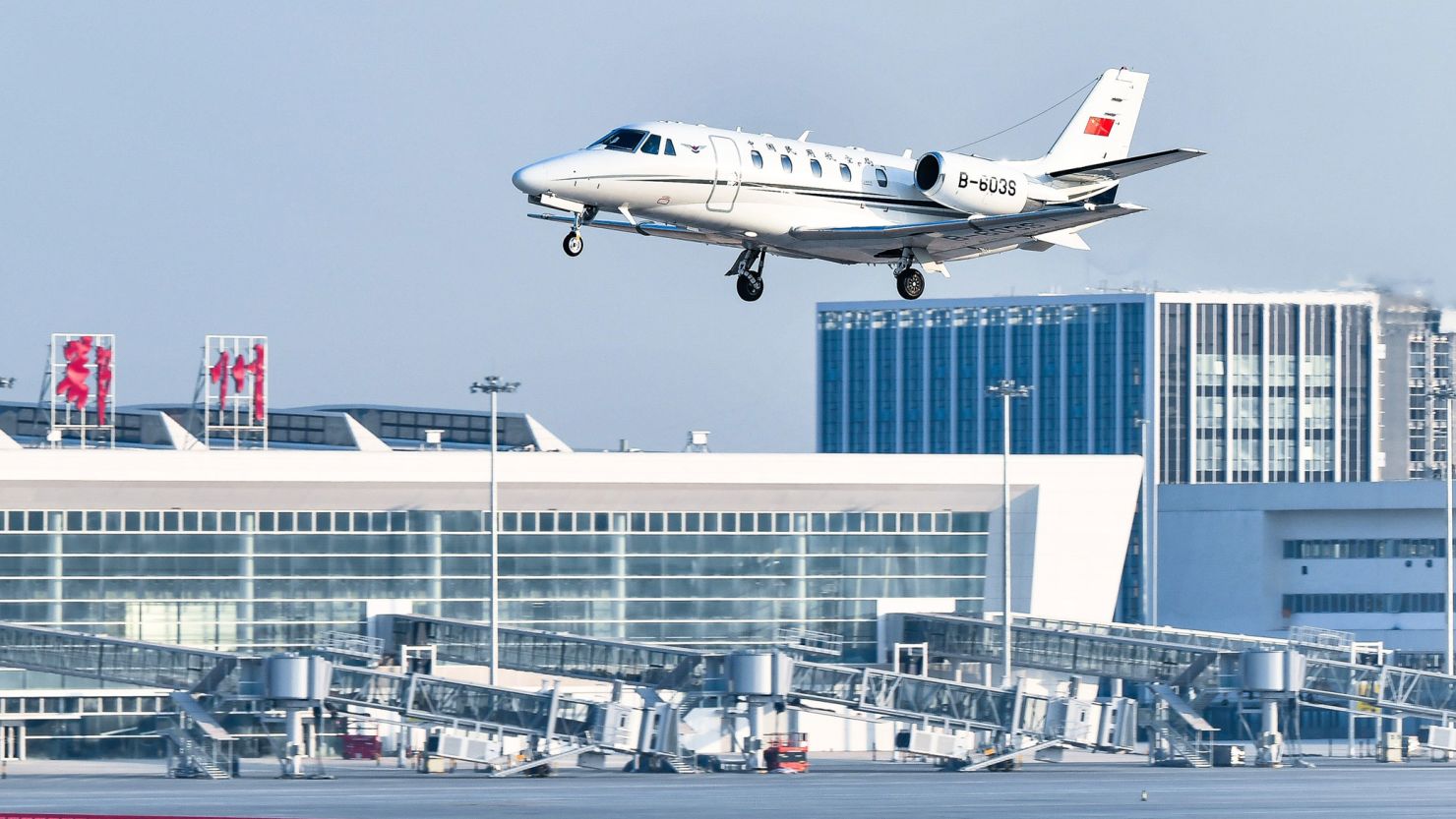What’s the difference between flying on a small plane versus a large one, besides the price?
Many misconceptions and preconceptions abound. Some people swear they only get airsickness on small planes, while others insist the on-board experience is more personalized.
A small plane is one with a maximum certificated takeoff weight of 12,500 pounds or less, according to the Federal Aviation Administration (FAA).
These planes, made by companies such as Cessna and Piper, can hold anywhere from 1-20 passengers.
They’re used for private aviation, but not exclusively. Some smaller planes can operate commercially on short routes or operate sightseeing flights. One example is the tourist flights that go over Peru’s Nazca Lines – most are operated on a 12-seat Cessna Grand Caravan, on which six people are lined along each side of the plane to guarantee everyone a window seat.
Toni-Grace Bush, a flight instructor based in Brisbane, Australia, addresses some of the most common questions about flying on these aircraft.
Are you more likely to get motion sickness on a small craft?
In short – yes.
“Motion sickness is definitely more prevalent in general aviation because of how much more small craft feel pockets of air,” Bush explains. “[The] smaller craft that I fly around are below 5,000 feet, which is typically where a lot of the more volatile weather vectors can be.”
She lists several of the most common causes of air queasiness: heat, loud noises and turbulence. The latter two are particularly prevalent on smaller planes.
“It’s much bumpier, and you do feel the turbulence more, especially during takeoff and landing.” Bush compares it to sailing: “The faster the boat travels, the more it skims over the waves and the less turbulence it feels. It’s the same with aircraft.”
If you are more prone to motion sickness, go ahead and take your remedy of choice ahead of boarding – even if you don’t end up needing it, better safe than sorry.
Bush has experience doing aerobatics, so she knows how to handle various levels of queasiness. She offers up these suggestions: “Make sure you are well rested, have a little food in your tummy but not too much, and make sure you’re hydrated.”
Is there more freedom in terms of what you can bring on board?
Not really. Smaller aircraft have weight limits, so you need to plan ahead and pack responsibly.
You also need to follow the same rules you would if flying on a bigger jet.
“A lot of the legislation airlines have to abide for what you can and can’t access is still relevant on small aircraft,” says Bush. For example, in her native Australia travelers must have permission to carry a firearm on any aircraft, regardless of size. Local laws still apply, so do your research first.
There are also weight limits on board smaller planes. Travelers may have to step on the scale before boarding and have their baggage weighed as well.
“Travel as lightly as possible,” Bush advises. “if you have to travel with other personal belongings, then the pilot would have to sacrifice fuel to accommodate for that.”
Why are small planes so loud?
Small planes are loud for the same reason that its passengers are more likely to experience turbulence: There isn’t as much space to absorb wind force and sound. Bush advises everyone on a small plane to have adequate ear protection, especially kids, whose ears are more sensitive.
Some planes provide ear coverings, but it’s never a bad idea to have your own handy.
“Once you lose your hearing, you lose your hearing,” she warns. Ear damage can be permanent, so plan ahead.
Are small planes more dangerous?
This is a common question, especially when attention is drawn to high-profile incidents involving public figures flying on board private planes. But you should take a deep breath and try not to assume the worst.
“There is always potential for an accident/incident to occur no matter what size the aircraft is,” explains Bush. “While there are more variables – age (of the plane), condition of aircraft systems, experience of pilot, weather – in general aviation aircraft that may lead to accidents/incidents in smaller aircraft … the aviation industry is held to a high safety standard regardless of the size of the plane.”
On planes, just like anywhere else, having knowledge and a sense of control will make you feel more at ease.
According to data from the National Transportation Safety Board (NTSB), there are at most a few dozen commercial plane crashes per year in the United States. Between 2010 and 2021, there were a grand total of two fatalities on board commercial craft.
Is it better to bring pets on smaller craft?
You have probably seen headlines about the desperate people hiring private planes to ferry their pets out of places with strict quarantines and Covid lockdowns.
Private and commercial aviation both have their pros and cons in this department.
If you can afford to fly animals on smaller specialty craft, it may be worth it just for your own peace of mind – some high-end aviation companies, like VistaJet, have specially trained crew members on board who know how to work with animals and have taken pet CPR courses.
Both will require a fair amount of paperwork, so you should keep up to date on shots and health visits, and get your pet a passport if needed. (Yep, that’s a real thing.)
Ask your vet for advice in advance. Some private plane companies have dedicated staff members who will walk you through the process – from documentation to boarding – as part of the cost of the ticket.

